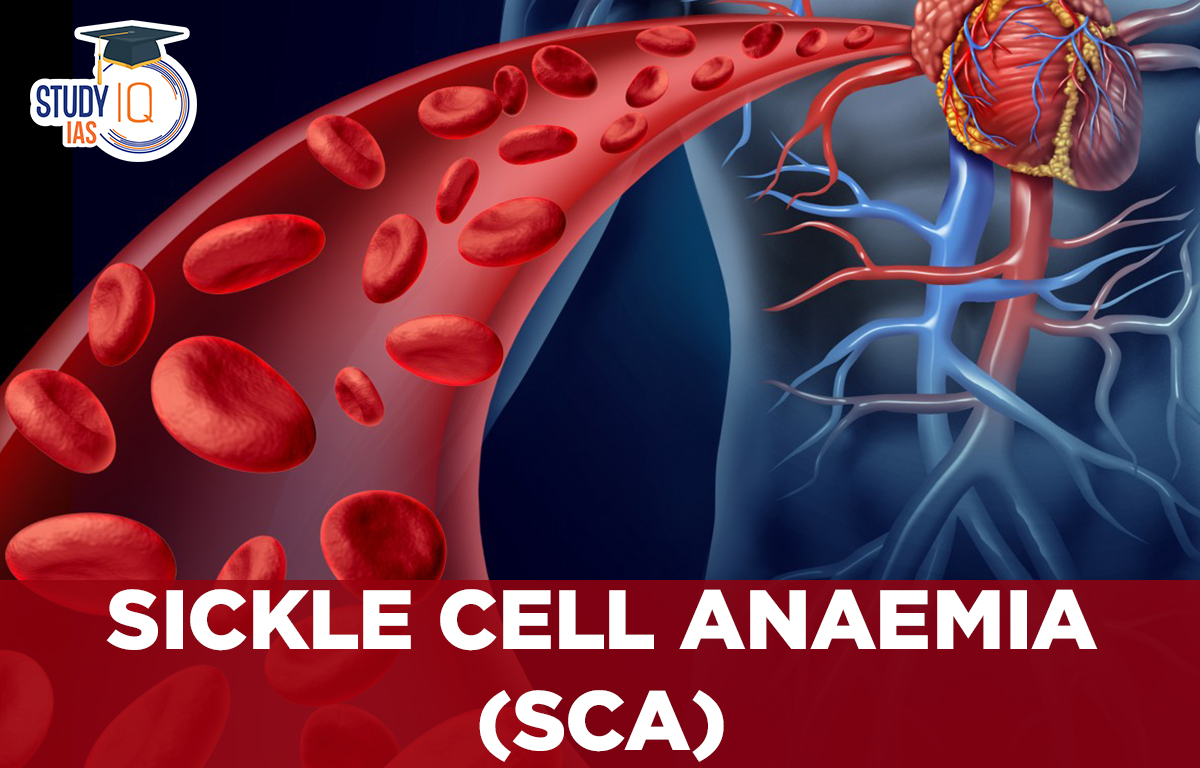Table of Contents
Context: In the budget speech, Finance Minister said that the government will work in “mission mode” to eliminate Sickle cell anaemia (SCA) by 2047.
About Sickle Cell Anaemia (SCA)
- It is one of a group of inherited disorders known as sickle cell disease. It affects the shape of red blood cells (RBC), which carry oxygen to all parts of the body.
- Cause: Haemoglobin which is tasked with carrying oxygen to all parts of the body has four protein subunits — two alpha and two beta.
- In some people, mutations in the gene that creates the beta subunits impact the shape of the blood cell and distort it to look like a sickle.
- Impact on RBC: A round red blood cell can move easily through blood vessels because of its shape but sickle red blood cells end up slowing and even blocking, the blood flow.
- Impact of SCA: Sickle cells die early, resulting in a shortage of red blood cells that deprive the body of oxygen.
- These obstructions and shortages may cause chronic anaemia, pain, fatigue, acute chest syndrome, stroke, and a host of other serious health complications.

India and Sickle Cell Anaemia (SCA)
- India is the second-worst affected country in terms of predicted births with SCA — i.e. chances of being born with the condition.
- Prevalence of haemoglobinopathies is more common among tribal populations than non-tribal communities in India.
- Haemoglobinopathy is a group of disorders in which there is abnormal production or structure of the haemoglobin molecule.
- It is passed down through families (inherited).
- This group of disorders includes haemoglobin C disease, haemoglobin S-C disease, sickle cell anaemia, and thalassemias.
- SCA is prevalent in communities residing in areas where malaria is endemic.
- Research has found that those with sickle red blood cells were more likely to survive malaria.
- In India, prevalence of SCA is higher in communities that practice endogamy, as the chances of having two parents with sickle cell trait are higher.
Treatment for SCA
- Gene therapy: The DNA inside the haemoglobin gene is edited to stop the disease.
- Stem cell transplants: The bone marrow affected by sickle cell anaemia is replaced with healthy bone marrow from a donor.
- Blood transfusion, wherein red blood cells are removed from donated blood and given to a patient, is also a trusted treatment in the absence of permanent cures.
Steps Taken in India to Tackle SCA
- The government plans to distribute “special cards” across tribal areas to people below the age of 40.
- The cards will be divided into different categories based on the screening results.
- The mission will receive funding under the National Health Mission.
- National Health Mission guideline on Haemoglobinopathies identifies establishing services at the community level for pre-marital and pre-conception screening backed by genetic counselling services as a strategy for addressing SCA.
- Indian Council of Medical Research and the National Rural Health Mission in different States are undertaking outreach programmes for better management and control of the disease.
- Ministry of Tribal Affairs launched a portal wherein people can register themselves if they have the disease or the trait, in order to collate all information related to SCA among tribal groups.


 Daily Quiz 03 July 2025
Daily Quiz 03 July 2025
 Dalai Lama Confirms He will have a Succe...
Dalai Lama Confirms He will have a Succe...
 List of Awards and Honours Received by N...
List of Awards and Honours Received by N...





















